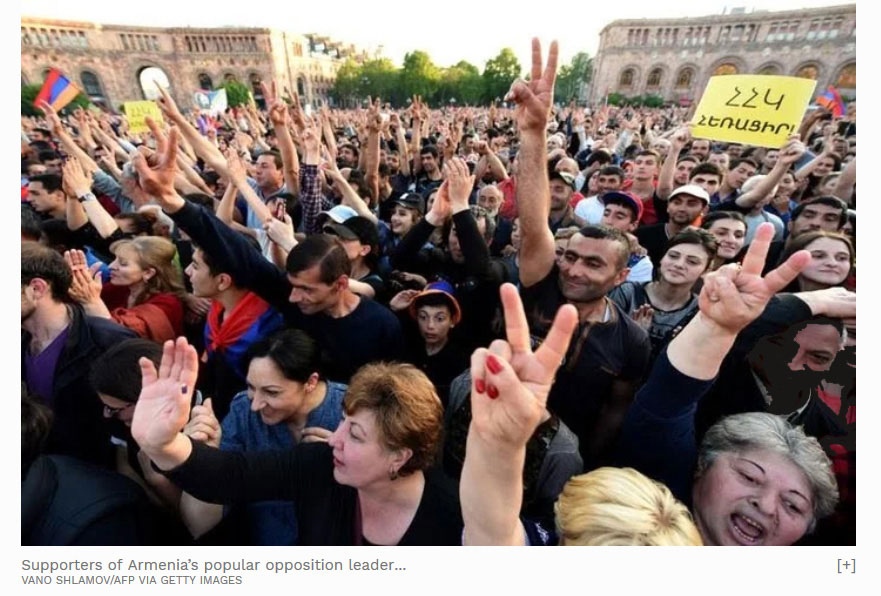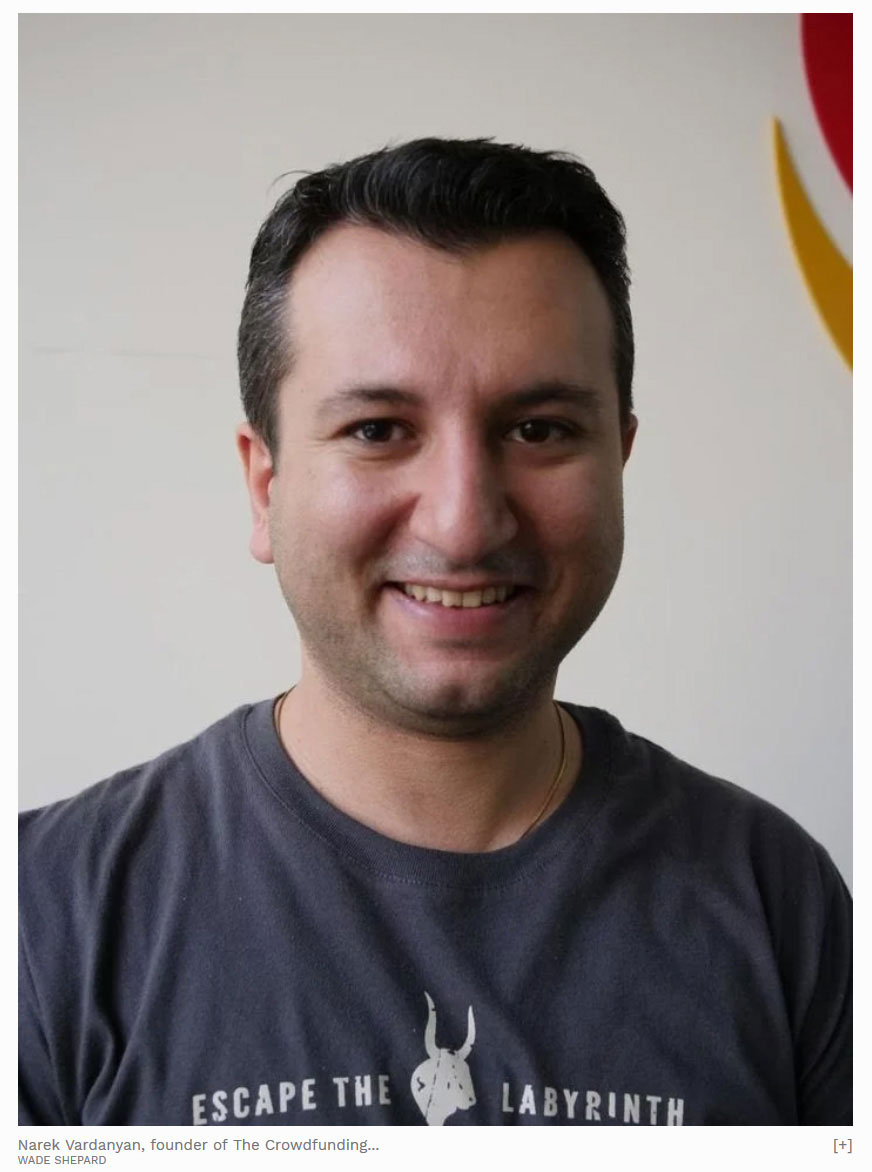TOURINFO- Forbes in an article published on January 31, 2020, announced Armenia as the World’s Next Tech Hub. While Armenia has been making strides towards developing its high-tech sector for many years, it wasn’t until the Armenian Revolution of 2018 that momentum really started to build. Suddenly, the little, insignificant country hidden deep in the centerfold of the world map was full of hope and looking forward to a future that seemed unusually bright. 
 As Azerbaijan, Georgia, and Turkey join and engage in major infrastructure projects, such as the Baku-Tbilisi-Kars railway, to revive their historic role as a land bridge between east and west, Armenia has been conspicuously left by the wayside. However, Armenia has taken a different path. Rather than diving headfirst into the promises of the New Silk Road or industrialization, they are wagering their chips on a completely different table: technology.
As Azerbaijan, Georgia, and Turkey join and engage in major infrastructure projects, such as the Baku-Tbilisi-Kars railway, to revive their historic role as a land bridge between east and west, Armenia has been conspicuously left by the wayside. However, Armenia has taken a different path. Rather than diving headfirst into the promises of the New Silk Road or industrialization, they are wagering their chips on a completely different table: technology.
Armenia is a landlocked country in the bowels of the Caucasus with scant natural resources. It does not have any ports. It is not on the road to anywhere. You cannot even enter or exit Armenia from the east or west, where hostile relations with both Azerbaijan and Turkey have resulted in long-closed borders. All the country has is human capital, which it is doubling-down on as high-tech research and development has become a national priority—a do or die objective to connect and do business with the outside world and break the blockade that is building up around it.
While Armenia has been making strides towards developing its high-tech sector for many years, it was not until the Armenian Revolution of 2018 that momentum really started to build. Suddenly, the little, insignificant country hidden deep in the centerfold of the world map was full of hope and looking forward to a future that seemed unusually bright.
“The Armenian nation has never really been able to live for itself. It’s always had someone dominating it or ruling it or manipulating it,” explained the half-Armenian Reddit co-founder, Alexis Ohanian, as we sat together in Yerevan. “This could mark the start of the first time when this country and especially the young people—the ones who are the most hungry, the most driven, the most optimistic—to actually have a chance to determine for themselves the fate of the country and where it heads, and that is a part of the Armenian experiment that has not really ever happened.”
A new outlook was established, and the power of technology was one of its driving forces: IT, software development and high-tech startups would form the backbone of the newly reemergent nation.
“We have small resources and high technology is one of the main directions of the Armenian economy to overcome the blockade and to import and export our educational brands outside,” said Arayik Harutyunyan, Armenia’s Minister of Education and Science.
Tech is now the largest foreign investment in Armenia and many of the world’s most powerful technology firms—including Intel, Microsoft, Google, IBM, Synopsys, and Cisco—all have a physical presence there, as the country’s tech sector grew 33% in 2018 to become a $250 million a year industry. While these numbers do not seem like much—it is scarcely more than what Jeff Bezos makes in one day—we need to keep Armenia’s diminutive size and small population in perspective.
Startups
Influenced by Armenian diaspora companies like Service Titan, which is now valued at about $1 billion, and native Armenian firms such as Shadowmatic, which won the Apple Design Award in 2015, Armenia’s startup scene has been growing rapidly.  Narek Vardanyan started The Crowdfunding Formula, one of the world’s top crowdfunding marketing firms, almost by accident. He was so unsuccessful at a Kickstarter campaign for a previous startup that he went back to the drawing board and started learning about crowdfunding from the ground up. He began calling up companies and individuals who had directed successful crowdfunding campaigns before and asked them how they did it. He took notes and compiled them in a book called The 57 Secrets of Crowdfunding, which he self-published and lackadaisically put up for sale on Amazon. To his surprise, the book quickly rose to become the #1 bestseller in the crowdfunding category.
Narek Vardanyan started The Crowdfunding Formula, one of the world’s top crowdfunding marketing firms, almost by accident. He was so unsuccessful at a Kickstarter campaign for a previous startup that he went back to the drawing board and started learning about crowdfunding from the ground up. He began calling up companies and individuals who had directed successful crowdfunding campaigns before and asked them how they did it. He took notes and compiled them in a book called The 57 Secrets of Crowdfunding, which he self-published and lackadaisically put up for sale on Amazon. To his surprise, the book quickly rose to become the #1 bestseller in the crowdfunding category.
Although he never actually ran a successful campaign himself, Narek Vardanyan was suddenly regarded as a crowdfunding authority. Local startups began coming to him for assistance, and he began putting his know-how to work—and soon realized that the information he put in his book actually worked.
So in 2015, Narek Vardanyan started The Crowdfunding Formula to manage and market the Kickstarter and IndieGogo campaigns for startups from all over the world, and the success stories began piling up: $4 million for Bionic Gym, $3 million for Volterman smart wallets, $1.7 million for a Monkii fitness device, etc. Their last nine campaigns raised over $17 million.
“We have to show that Armenia isn’t only a developing country, but that we’ve had some early successes here,” Narek Vardanyan said.
Another early success in Armenia’s startup scene was PicsArt, one of the top photo editing apps for Android. Mikayel Vardanyan (no relation to Narek), the co-founder and CTO, said he came up with the idea when his daughter grew frustrated with a photo editing program that she was trying to use. That was in 2010, a time when the Google Play store was a pretty barren place.
“So we were like, let’s create something that will help non-creative or non-experienced people to be creative,’” he said.
He worked with a small team of 10 people, mostly students, and came up with the first iteration of the PicsArt app. It was something that other Android users were clearly looking for—a lot of other users, in fact. In its first month, the PicsArt app was downloaded over a million times. By 2020, this number is up to 600 million, as the app now has upwards of 150 million regular monthly users. PicsArt went on to receive numerous awards and accolades, including ranking fifth in the Forbes Top 50 Startups of 2015, as Mikayel’s small team of ten grew into a 500 person global operation with offices in Armenia, San Francisco, Beijing, Moscow, Tokyo, and LA.
PicsArt went on to receive numerous awards and accolades, including ranking fifth in the Forbes Top 50 Startups of 2015, as Mikayel’s small team of ten grew into a 500 person global operation with offices in Armenia, San Francisco, Beijing, Moscow, Tokyo, and LA.
“If you look ten years ago, there were very few companies [in Armenia.] So at that time doing a startup was not a part of the culture, it was pretty new and most of the people were afraid to do it or didn’t know how to do it, so they just preferred to work at a safer place [rather than] doing a startup where everything is unpredictable,” PicsArt’s Vardanyan said.
However, this has all changed today, as startups have grown to become one of the biggest trends in Armenia. Mikayel predicts that there are now over 500 startups in the country, with many of them finding success and expanding outside of Armenia.
“We were a really good example for others that you can do this from Armenia; it doesn’t matter where you are,” he said.
There have been other good examples as well, including Zoomerang, a video editing app that is rivaling Tik Tok with its 100,000 daily downloads and 10 million users, and ggTaxi, which takes the place of Uber in Armenia and is available in Georgia and Russia.
While the Armenian government doesn’t offer much in the way of direct funding for startups they do provide preferential tax breaks specifically designed for IT companies and tech startups. Basically, they do not pay any income taxes and only face a payroll tax of 10%, along with other perks and incentives. The new government is also making it easy to start a business in Armenia, offering an “open door” policy which is designed to attract foreign businesses and investors. According to the World Bank’s Doing Business report, Armenia is the 10th easiest country in the world to start a business in.
Education
I asked the Education Minister Kzhdryan what sets Armenia apart from the rest of the emerging markets in the world that are also currently trying to use tech to leapfrog their rivals and boost their economies.
“Our brains,” he replied instantly. “We can create a lot of resources by using our brain.”
Part of Armenia’s rapid success in the global tech world was due to the country’s legacy as an education center.
“Since the time of the Soviet Union, Armenia had the best schools,” Mikayel repeated the oft-stated fact.
Armenia was the Soviet Union’s scientific hub and center of its research activities, providing nearly half of the high-tech needs of the Soviet military. This legacy is still alive today in how society embraces and values education and hard science.  One man that has made improving the technological studies of Armenia’s students his life’s mission is Karen Vardanyan. In 2014, he started a program called Armath, which sought to put robotics laboratories in rural schools across Armenia.
One man that has made improving the technological studies of Armenia’s students his life’s mission is Karen Vardanyan. In 2014, he started a program called Armath, which sought to put robotics laboratories in rural schools across Armenia.
“When students start university programs we noticed that they come from schools that are not so strong in what’s called STEM (Science, Technology, Engineer, Math),” he said. “So we started to find some equipment to provide to schools to start robotics laboratories.”
The free program spread rapidly, and there are now 575 Armath labs throughout Armenia and Georgia which have over 15,000 students—84% of which are admitted to universities.
This is a growing movement across Armenia, where, as of the end of last year, there were robotics labs in 25% of the country’s schools—something which the government is hoping to up to 50% in the coming year.
“The fact that Armenian culture is so hungry for hard science and hard math means that there can be an ecosystem of talented AI developers who will thrive here because that is a skill set that’s only going to increase in value,” Ohanian concluded.









